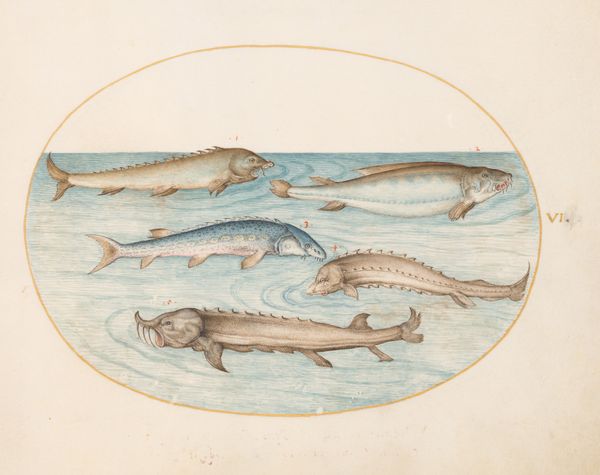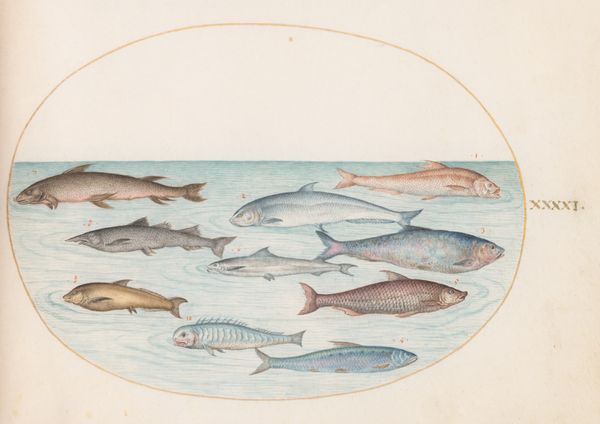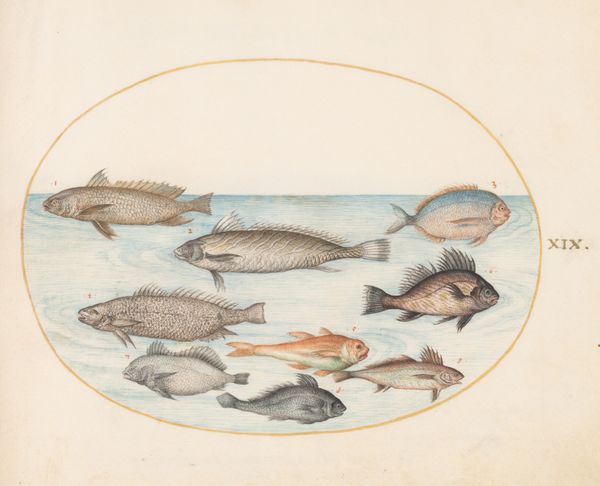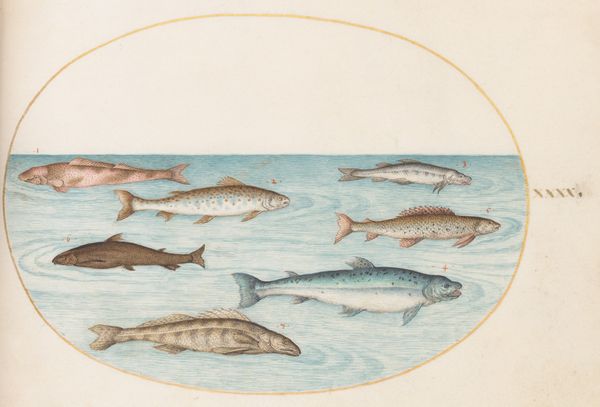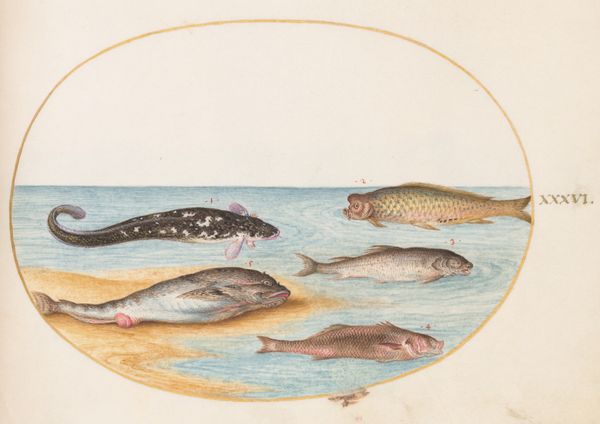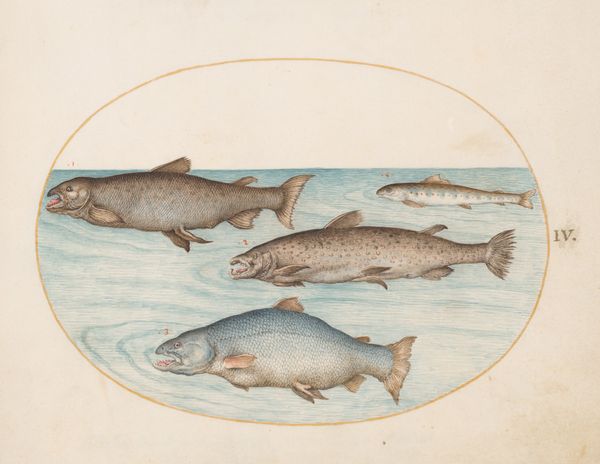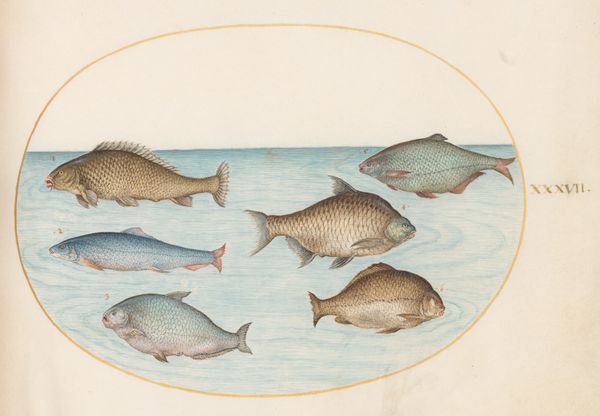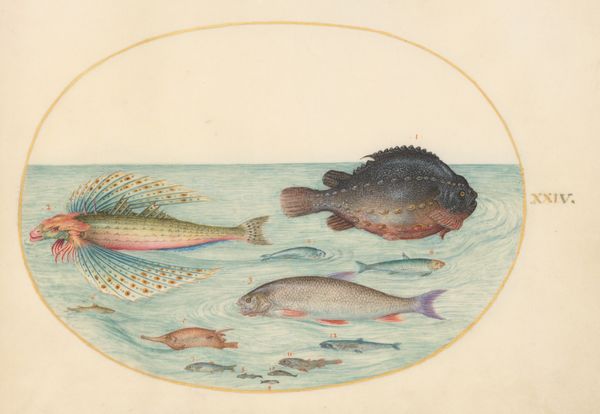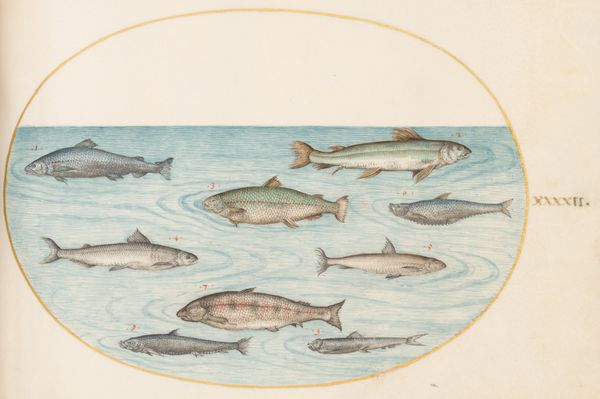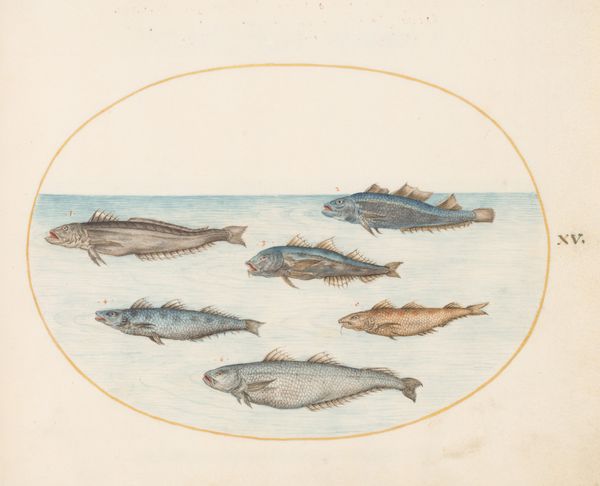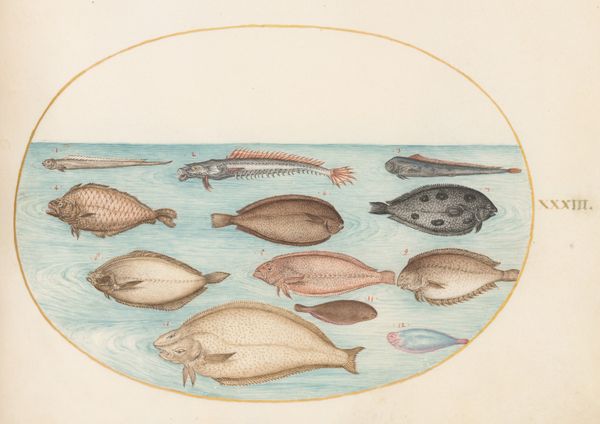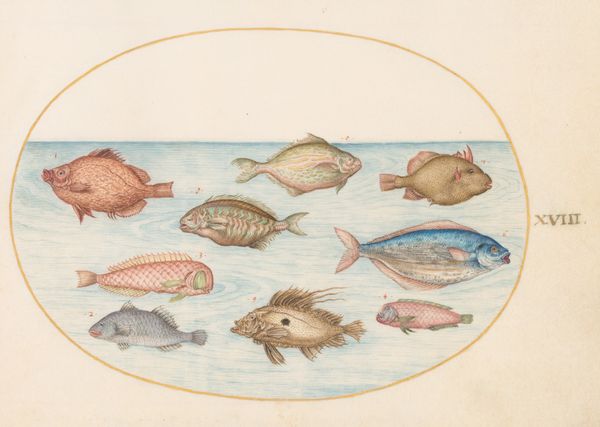
drawing, watercolor
#
drawing
#
figuration
#
11_renaissance
#
watercolor
#
coloured pencil
#
watercolour illustration
#
watercolor
Dimensions: page size (approximate): 14.3 x 18.4 cm (5 5/8 x 7 1/4 in.)
Copyright: National Gallery of Art: CC0 1.0
Editor: Here we have "Plate 11: Four Fish and Shells" by Joris Hoefnagel, made around 1575 to 1580, using watercolor and drawing techniques. I'm struck by how meticulously rendered the fish are, yet there's also this somewhat surreal quality to the composition. What do you see in this piece? Curator: I see a potent example of early scientific illustration, reflective of a growing empirical impulse, yet deeply intertwined with the social and political dynamics of the Renaissance. How do you interpret the almost obsessive detail in rendering these sea creatures? Editor: Well, it makes me think about the role of observation in the development of science and art during this period. Was this kind of documentation typically accessible to everyone? Curator: Certainly not. Knowledge and its dissemination were profoundly shaped by power structures. Consider who commissioned and consumed such images. Were they intended purely for scientific study, or were they also displays of wealth, knowledge, and dominion over the natural world? How do you see the relationship between art and power operating here? Editor: That's fascinating. I hadn’t thought about it that way. It reframes the artwork as more than just a scientific study. It makes you wonder about access to nature. Curator: Exactly! It invites us to examine whose gaze and whose agenda were prioritized. Furthermore, think about how these images might have reinforced existing hierarchies and justified colonial expansion, particularly in relation to the exploitation of natural resources. Editor: So it’s both a depiction and an assertion of control, revealing the socio-political context? Curator: Precisely. By understanding the historical and social context, we see the artwork as more than just a beautiful rendering, but as a cultural artifact reflecting the complex interplay of science, power, and representation. It provides invaluable insight into the worldview of the elite during this period. Editor: That’s a much richer way to think about it. I'll never look at Renaissance illustrations the same way!
Comments
No comments
Be the first to comment and join the conversation on the ultimate creative platform.
